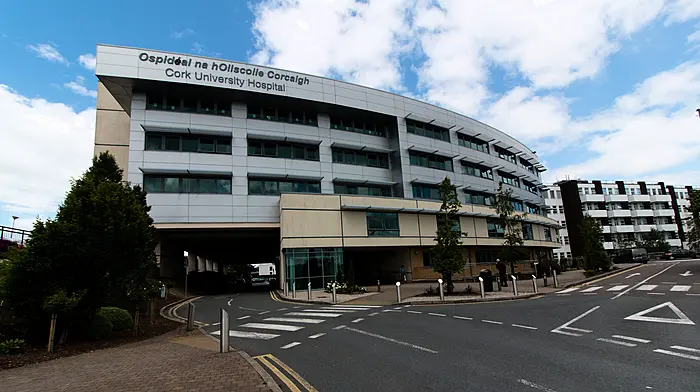Operators know they can sell more from aesthetically-pleasing retail stores that have a crisp, smart style.
LAST week news broke of a British company, Rioja Estates (nothing to do with Spanish plonk), intending to build an entire ‘shopping outlet-village’ at Carrigtwohill, in East Cork.
Similar to a shopping-outlet village near Dublin, the Carrigtwohill development will specialise in the sale of end-of-line bargains and last season’s products at knock-down prices. The ‘outlet-shops’ also will sell full price, high street retail goods and, in the combination of the two, shoppers will experience a delightful blurring of the lines between a bargain-basement shop and a top-of-the-range, up-market shop.
According to the promoters, the commercial magic of shopping outlets is that people tend to spend more money in them than in conventional clothes shops.
Outlet-shopping is an American idea and dates back to the 1930s when times were tough and shoppers would buy damaged or excess goods if the price was right.
This, in turn, led to shops having a high turnover of stock and, as far as the ordinary punter was concerned, genuine bargains. What’s more, shoppers could purchase brands that normally would be beyond their means.
The idea spread to Europe in the 1990s but it soon became apparent that the American model of off-loading bargains from grotty premises would not catch-on in sophisticated Europe. The operators realised that they could sell much more from aesthetically-pleasing retail stores that had a crisp, smart style – such as those at the specially built Kildare Village where shops have a Georgian-type appearance.
Leisure shopping
And then there’s the role of ‘leisure’: Giles Membrey, MD of Rioja Estates, explains that ‘leisure’ is now an integral part of the retail business and that such a fact ‘is particularly pertinent to contemporary outlet shopping.’
Discovering good clothes in an ‘outlet shop’ should be part of a relaxing day out; a leisure experience that offers pleasant ‘dwell times’ and which encourages shoppers to spend more money than in the traditional department store.
What’s more, Membrey is confident that his company annually will attract 220,000 bargain hunters to the Carrigtwohill outlet-village and, as has been shown elsewhere, shoppers will come from a two-hour drive radius.
Rioja Estates chose Carrigtwohill because of its good road network, rail link, and proximity to tourist attractions – all of which are important to a shopping expedition. Because, theoretically speaking, after purchasing a Zimmermann Goldie Splice Dress at the knock-down price of €997 and an all-wool, zip neck cardigan at €8.95 (for the auld fella), the ladies can head-off to Spike, Fota, or Midleton Distillery to enjoy the rest of the day.
Jobs galore
Membrey also revealed that the Carrigtwohill retail park is expected to take 24 months to build at a cost of €100m, and will open in March 2024. It will create more than 850 permanent jobs.
His company has good relations with Cork County Council, which will have to revise the County Development Plan to enable construction of the shopping village. Planning approval is expected at the end of January. And there’s the rub!
Environmentalists already have expressed opposition to the project. As is their right, they’re objecting on the basis that the Carrigtwohill Outlet-Village will not benefit local business and communities.
Said a spokesperson: ‘Given the context of the current climate crisis and the need to provide facilities that are easily accessed by more sustainable modes, having such a big centre which will still be accessed primarily by road is not future-proofing and does not align with climate adaptation and mitigation actions.’
Now, we’re not quite sure what all that means but the following statement is clear: ‘There would be ramifications for other businesses in the area and a knock-on effect of a loss of jobs in neighbouring towns and the city.’
It’s still early days, of course, but a far cry from the time in 2006 that Amgen, the chemical giant, announced a $1bn (€800m) investment in Carrigtwohill, and the promise of 1,100 jobs. Perceived as the most significant example of direct foreign investment in the history of the State, the Amgen site became the best serviced commercial location in the country.
Shock, horror!
A year later (2007), the Yanks shocked Cork with an announcement of indefinitely postponing their multi-million dollar project. This was followed by a hammer-blow statement that the company was no longer proceeding with the project. Within months the 133-acre site was returned to the IDA.
Heart-broken politicos couldn’t take-in what was happening. Carrigtwohill had been chosen from 25 locations world-wide. Everything was ready. It had a marvellous site: harbour, railway, motorway and airport were just minutes away; and then, out of the blue, the enormous ‘let-down’ that dashed local hopes of an economic boom!
Desperately seeking explanations, devastated local politicos considered the possibility that the road outside the entrance might have been the reason for the disaster. Vehicles leaving the plant and heading for Cork would have to travel to Midleton before turning back to Cork. Was that it? they asked.
They never got an answer because Amgen disappeared like a snot off a slate, despite the €6m worth of work carried out by Cork County Council. (In 2007 a report suggested that the company agreed to reimburse the Council).
A dead duck
Two years ago, Cllr Noel Collins wanted rezoning of the Amgen site to allow for the construction of social housing units. He was told in no uncertain terms that the site was zoned as a ‘Strategic Employment Area’ and that Carrigtwohill continued to be seen as the key to the future development of metropolitan Cork. The councillor also was informed that an extensive land bank for housing already existed in the Carrigtwohill area.
And then, Fianna Fáil councillor, Kenneth O’Flynn, startled everyone with the revelation that emissaries of Nissan Japan and Nissan UK were on their way to Carrigtwohill to assess the site as a possible location for a new manufacturing plant. That also fizzled out.
Inevitably, and sadly, the fact of the matter was hard to swallow: Carrigtwohill was a dead duck! Not a single player from the global pharmaceutical industry was tempted by the marvellous land bank.
But now, at last, hope is on the horizon. Although Carrigtwohill will not get its huge factory and jobs for hundreds of people, the place is in line for something that also has the power to please and delight: shops that sell cut-price clobber!
And, let’s face it, not even Myles na gCopaleen with all his story-telling skills could invent a happy ending like that!







